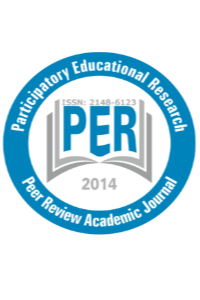
Participatory Educational Research
Yazarlar: Fatih ERDOĞMUŞ, Mıustafa KOKOÇ, Eda PİNAL, Şeval BİLGİ, Zeynep MURAT
Konular:Eğitim, Bilimsel Disiplinler
DOI:10.17275/per.15.34.2.3
Anahtar Kelimeler:Usability,Usability test,Online learning
Özet: Conducting research studies pertaining to effective and efficient use of online learning environments, about which there are findings in the national and international literature indicating that they are commonly used, is important to improve efficiency of distance education. The purpose of this study is to investigate the usability of an online learning environment used for synchronous distance education in terms of effectiveness, efficiency, and satisfaction dimensions; to determine usability problems; and to propose solutions regarding these problems. The participants of this study are undergraduate students studying in teacher training programs. Five of them are female and five of them are male. It was remarkable during the selection of the participants that they have never used this system before or they rarely used it. The usability study was conducted through assigning authentic tasks to the participants in the online learning environment and digitally recording their performance on these tasks. In the current study, user-based approach, which is one of the usability approaches, was used. Within the study, the participants were assigned 10 tasks to be completed on the system so as to measure the effectiveness and efficiency levels of the system. The usability of the system was investigated by determining how much time was spent while performing the tasks, the number of the mistakes done, and the number of the participants completed the tasks successfully. According to the participants’ completion status of the tasks, 4 participants could not complete only third and fourth tasks and as for the other tasks, all participants completed them all. In addition, it is observed that the participants made mistakes while performing the third task. The result of the system usability scale, which was distributed to the participants after the completion of the tasks, was calculated as 50,75 out of 100. In conclusion, this study revealed that there is a problem on the distance education system in terms of usability.